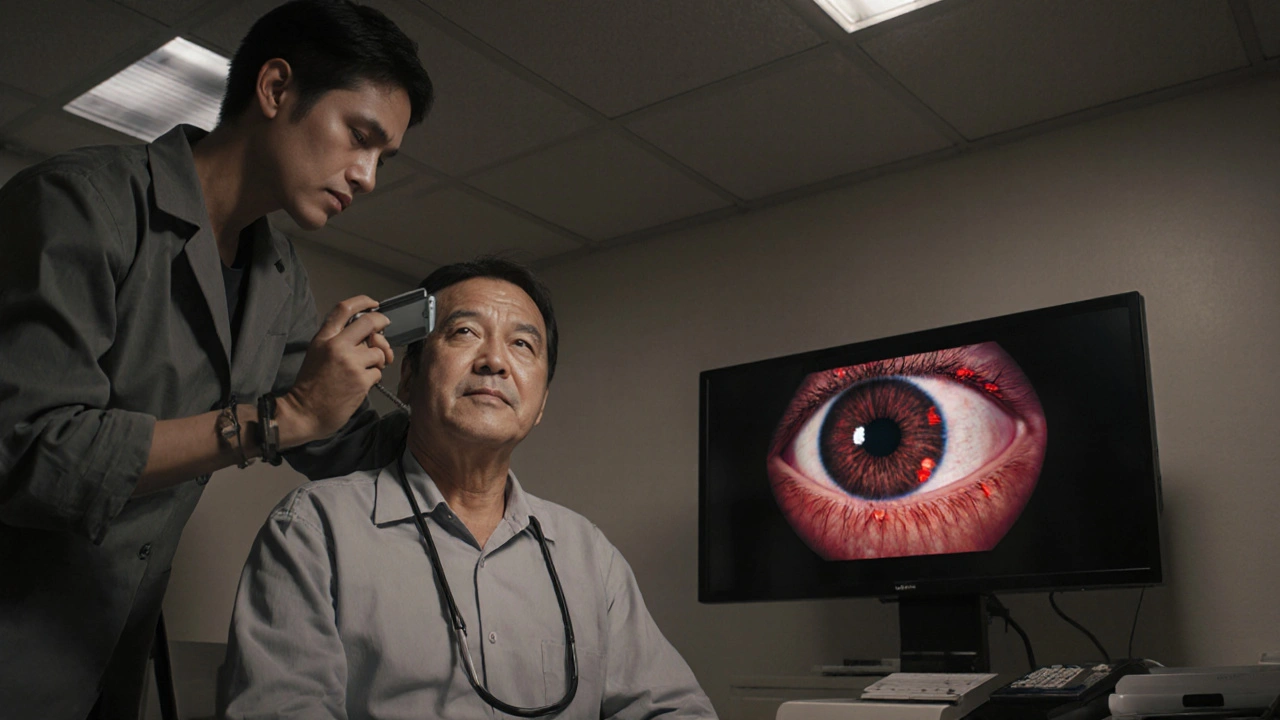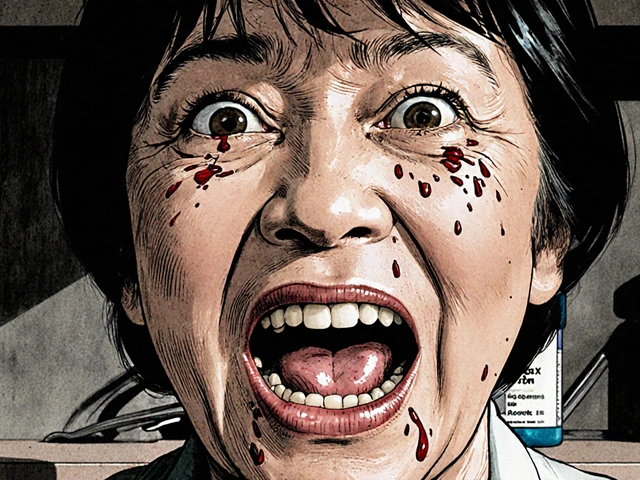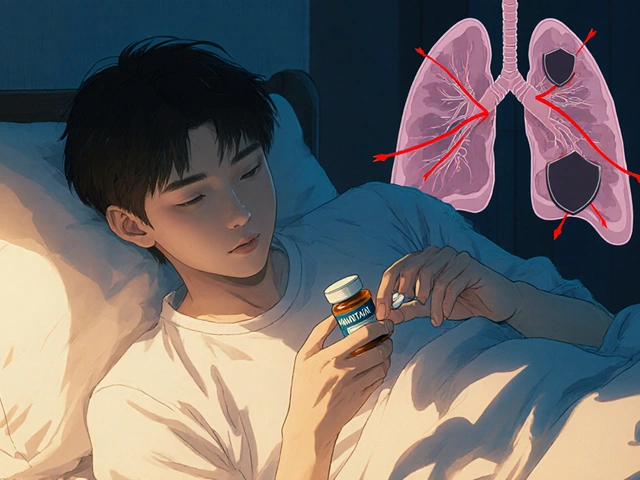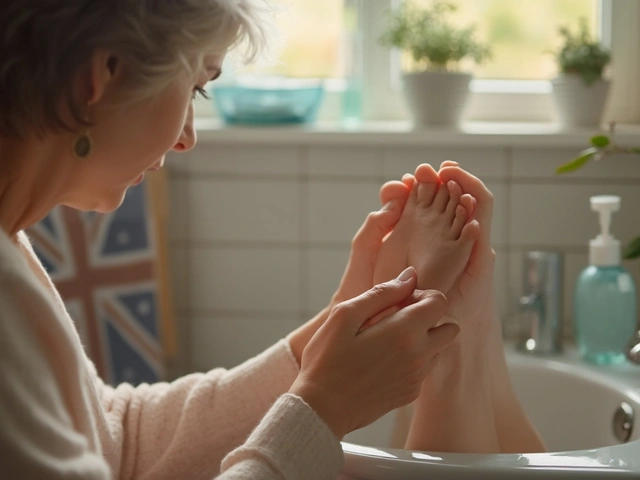Diabetes doesn’t just affect your blood sugar. It silently damages your eyes - and many people don’t realize it until it’s too late. Diabetic retinopathy, the most common cause of vision loss among working-age adults in the U.S., develops slowly. No pain. No symptoms at first. By the time you notice blurry vision or dark spots, damage may already be permanent. The good news? More than 90% of diabetes-related vision loss is preventable - if you get screened on time.
When Should You Get Your First Diabetic Eye Screening?
If you have type 1 diabetes, your first eye exam should happen within five years after diagnosis. That’s the rule. But if you have type 2 diabetes, you need that exam right away - at diagnosis. Why? Because many people have undiagnosed diabetes for years before they’re officially told they have it. By then, retinopathy may already be starting.
It’s not just about timing. It’s about catching changes early. A 2023 study showed that African American patients with the same blood sugar levels as white patients developed severe eye damage 2.3 years earlier. That’s why skipping your screening isn’t just risky - it’s dangerous.
How Often Should You Get Screened After the First Exam?
Once you’ve had your first exam, your next visit depends on what the doctor finds. Here’s the real-world breakdown:
- No retinopathy at all? You can wait a year. If you’ve had two or more normal exams and your HbA1c is under 7%, you might stretch it to every two years - but only if your doctor agrees.
- Mild diabetic retinopathy? Back in six to twelve months. This isn’t an emergency, but it’s a warning sign.
- Moderate retinopathy? Every three to six months. Your eyes are changing. You need closer watch.
- Severe retinopathy or macular edema? Every one to three months. This is serious. Treatment needs to start fast.
Don’t assume that good blood sugar control means you’re safe. The Wisconsin Epidemiologic Study found that people who skipped their eye exams had a 23-times higher risk of going blind. Even if you feel fine, your eyes are telling a different story.
What Happens During a Diabetic Eye Screening?
Traditional screening means dilation. Eye drops widen your pupils so the doctor can see the back of your eye. Then they use a special camera or magnifying lens to check for swollen blood vessels, leaking fluid, or new abnormal vessels - signs of diabetic retinopathy. It’s quick, but it’s not comfortable. Your vision stays blurry for hours. Driving? Not an option. A birthday party? Forget it.
That’s why so many people skip it. A 2023 survey found 42% of patients avoided exams because of the discomfort. Another 68% said transportation was the main barrier - especially in rural areas where the nearest eye specialist might be over 50 miles away.

Teleophthalmology: The Game-Changer for Rural and Underserved Patients
Enter teleophthalmology. No dilation. No long drive. No blurry vision. You sit in your primary care clinic, and a technician takes a photo of your retina with a special camera. The image gets sent to a specialist - sometimes in another state - who reviews it within hours.
It’s not science fiction. The FDA approved the first AI-based system, LumineticsCore (formerly IDx-DR), back in 2018. It doesn’t need a doctor to interpret the image. The software analyzes the photo and gives a yes-or-no answer: “More than mild retinopathy detected” or “No referral needed.” In clinical trials, it caught 87% of cases that needed treatment and missed only 9% - better than many general practitioners.
In Tamil Nadu, India, a teleophthalmology project screened 15,000 people. The remote graders agreed with in-person specialists 98.5% of the time. In the U.S. Veterans Health Administration, screening rates jumped 32% after they rolled out teleophthalmology across 136 clinics. People didn’t have to take half a day off work or find a ride. They got screened during their regular diabetes checkup.
Why Teleophthalmology Isn’t Perfect - Yet
It’s not a magic fix. Retinal photos can’t detect everything. Glaucoma. Cataracts. Nerve damage from diabetes. Those need a full eye exam. Teleophthalmology only looks at the retina. If your vision is suddenly blurry, or you see flashes of light, you still need to see an ophthalmologist - no exceptions.
Cost is another hurdle. Setting up a teleophthalmology station costs about $28,500 on average. That’s a lot for a small clinic. And insurance? Only 63% of private insurers cover it in 2024. Medicare does. Medicaid? Not always. A 2024 study found clinics serving mostly Medicaid patients were 47% less likely to use teleophthalmology than those serving private insurance patients. That’s not progress - that’s a widening gap.

How Clinics Are Making Screening Stick
Some places are fixing the problem. Kaiser Permanente automated reminders. Their system sends SMS texts 21, 14, and 7 days before your scheduled exam. Result? Missed appointments dropped 27%.
Other clinics now embed screening into diabetes management. Instead of sending you to a specialist, the nurse takes the photo during your HbA1c test. The results come back the same day. If something’s wrong, you get a referral immediately. No waiting 37 days for a specialist slot - the average wait time in big cities, according to the American Medical Association.
And documentation matters. Under Medicare’s Quality ID #117, doctors must prove they screened patients or documented why they didn’t. Miss the target - 70% of patients screened - and your Medicare payments get cut by 9% in 2025. That financial pressure is finally pushing clinics to act.
What’s Next? Personalized Screening
The future isn’t just about where you get screened - it’s about how often. Right now, everyone gets the same schedule: yearly, or every two years. But that’s too simple.
The T1D Exchange is testing a new algorithm that looks at 17 risk factors - not just HbA1c. Age. Blood pressure. Cholesterol. Duration of diabetes. Family history. Race. Kidney function. The algorithm can tell which patients are truly low-risk. For them, screening every three years might be safe. For others? Quarterly.
This isn’t theoretical. Early results show that 40% of patients could safely extend their interval without missing a single case of sight-threatening retinopathy. That means fewer visits, less cost, less stress - but only if the system is accurate and accessible to everyone.
What You Need to Do Right Now
If you have diabetes, here’s your action list:
- Call your doctor. Ask: “When was my last eye screening? What did they find?”
- If you haven’t had one yet - schedule it. Don’t wait.
- If you’re in a rural area, ask if your clinic offers teleophthalmology. If not, ask why - and push for it.
- If dilation makes you skip exams, ask about non-dilated retinal photography. It’s not perfect, but it’s better than nothing.
- Set a calendar reminder. Mark your next screening date. Don’t rely on your doctor to remind you.
Diabetes is a lifelong condition. Your eyes don’t get a pass. They need regular checks - not just when you feel something’s wrong. Because when it comes to diabetic eye disease, waiting until you can see the problem means it’s already too late.
Do I need to get my eyes checked even if my vision feels fine?
Yes. Diabetic retinopathy often causes no symptoms until it’s advanced. By the time you notice blurry vision, floaters, or dark spots, damage may already be irreversible. Screening finds problems before you feel them - that’s why annual checks are critical, even if you feel perfectly healthy.
Can I skip my eye exam if my blood sugar is under control?
No. While good blood sugar control lowers your risk, it doesn’t eliminate it. Studies show people with HbA1c levels under 7% still develop retinopathy - especially if they’ve had diabetes for over 10 years. Race, blood pressure, and genetics also play roles. Don’t assume control means safety.
Is teleophthalmology as accurate as an in-person exam?
For detecting diabetic retinopathy and macular edema - yes, in most cases. FDA-approved AI systems like LumineticsCore detect more than mild retinopathy with 87% accuracy. But they can’t see other eye problems like glaucoma or cataracts. If your vision changes suddenly or you have other symptoms, you still need a full exam by an eye specialist.
Why do some people get screened every year and others every two years?
It depends on what the doctor finds. If your retina looks completely normal and your HbA1c is below 7%, you might safely wait two years. But if you have even mild retinopathy, you need to come back in 6-12 months. Your doctor adjusts the schedule based on your risk - not a one-size-fits-all rule.
Does insurance cover teleophthalmology?
Medicare covers it. Medicaid coverage varies by state. Private insurers only cover it in 63% of cases as of 2024. Always check with your insurer before scheduling. If your clinic offers it and your insurance doesn’t cover it, ask if they have a low-cost option - many do.
What if I can’t get to a specialist because of transportation?
Ask your primary care provider if they offer retinal imaging in-office. Many clinics now have portable cameras that take photos during your regular diabetes visit. The images are sent to a specialist remotely. No travel needed. If they don’t offer it, ask why - and request it. This is a proven solution for rural and underserved communities.
Are AI screenings safe and reliable?
Yes. AI systems like LumineticsCore are FDA-approved and tested in thousands of patients. They don’t replace doctors - they help them. These tools flag cases that need urgent attention and clear ones that don’t. Studies show they catch more than 85% of sight-threatening cases. They’re not perfect, but they’re far better than skipping the exam entirely.






Craig Hartel
28 November 2025 - 12:47 PM
Just had my first teleophthalmology scan last week at my local clinic-no drops, no blur, and I was done in 10 minutes. I didn’t even know this was a thing until my nurse mentioned it. If you’re in a rural area or just hate dilation, this is a game-changer. Seriously, ask your doctor about it. No excuses anymore.
king tekken 6
29 November 2025 - 15:27 PM
man i been diabetic since 2015 and i never got my eyes checked till last year… i thought if my sugar was good i was fine… turns out my retina looked like a spider web. i was lucky. dont be like me. get screened. even if you feel fine. your eyes dont lie. 😔
DIVYA YADAV
1 December 2025 - 03:18 AM
Of course America pushes AI over doctors-because profit over people is the American way. In India, we have thousands of trained ophthalmologists who see patients daily. Why are we letting a machine with 91% accuracy replace human judgment? This is not progress-it’s corporate laziness dressed as innovation. And don’t get me started on how Western tech companies patent these tools and sell them back to developing nations at 10x the cost. We don’t need your AI. We need equity.
Geethu E
3 December 2025 - 01:18 AM
As a nurse in a rural clinic in Kerala, I’ve seen this work firsthand. We started using portable retinal cameras two years ago. Our screening rate went from 32% to 89%. People who never came back for eye exams now walk in during their diabetes checkup. No one has to travel 80 km. No one has to miss a day’s wage. It’s not perfect, but it’s saving sight. And yes, we still refer the high-risk cases to specialists. Tech is a tool-not a replacement.
Kim Clapper
3 December 2025 - 05:56 AM
I find it deeply concerning that medical institutions are now outsourcing diagnostic judgment to algorithms trained on datasets that overwhelmingly represent white, urban populations. This is not science-it’s systemic bias with a user interface. If you're South Asian, Black, or Indigenous, your risk profile is different. Your retinal patterns are different. And yet, these AI models were never validated on your data. You're being screened by a system that doesn't see you. That's not innovation. That's negligence dressed in binary.
Bruce Hennen
3 December 2025 - 06:59 AM
Let’s be clear: the 90% preventable stat is misleading. It assumes perfect compliance with screening and glycemic control. Real-world adherence is under 40%. The real problem isn’t access-it’s patient behavior. People skip appointments, ignore HbA1c targets, and then blame the system when they lose vision. No amount of teleophthalmology fixes human apathy.
Jake Ruhl
4 December 2025 - 11:22 AM
so like… what if the AI says no problem but you start seeing floaters? like… do you just ignore it? because i had a friend who got cleared by the machine and then went blind 3 months later. turns out the AI missed the swelling because the photo was a little blurry and the lighting was off. they said it was "low confidence" but still said "no referral needed". like… what even is safety here? i dont trust machines with my eyes man.
Chuckie Parker
4 December 2025 - 19:31 PM
Medicare covers it. Medicaid doesn't. Private insurers? Only 63%. That's not a health issue. That's a political failure. The same people who scream about government waste are the ones cutting funding to prevent blindness in low-income communities. You want lower healthcare costs? Prevent blindness. It's cheaper than vitrectomies and disability payments. But no-let's just let people go blind and then bill them for emergency care. Classic American logic.
anant ram
5 December 2025 - 05:37 AM
My uncle, 68, type 2 for 20 years, HbA1c always under 6.5-still got severe retinopathy. Why? Because he thought, "I’m doing everything right." He didn’t know race, blood pressure, and duration matter too. He lost 60% of his vision before he got screened. Now he’s pushing every diabetic in his village to get tested. Don’t wait for symptoms. Don’t wait for perfect control. Just get the scan. Now.
Chris Kahanic
5 December 2025 - 18:44 PM
Interesting that the study mentions African American patients develop damage 2.3 years earlier. But no mention of why. Is it genetics? Access? Stress? Diet? The article skips the root causes. Teleophthalmology helps with access-but doesn’t fix the underlying disparities. We’re treating symptoms of a systemic disease, not the disease itself.
Leah Doyle
7 December 2025 - 10:50 AM
I’m a type 1 for 18 years and I used to skip screenings because dilation made me miss work. Now I use the non-dilated camera at my PCP’s office. Same day results. No blurry vision. No driving home blind. I wish I’d done this 10 years ago. 🙏
Alexander Rolsen
8 December 2025 - 22:01 PM
They say AI catches 87% of cases. That means 13% slip through. Who’s responsible when someone goes blind because the algorithm missed it? The clinic? The vendor? The FDA? Nobody. That’s the real danger. We’re outsourcing accountability to code. And then we wonder why people distrust medicine.
Alexis Mendoza
10 December 2025 - 15:22 PM
It’s funny how we think technology solves human problems. We build AI to catch retinopathy… but we don’t build systems to make people care. No app can replace a nurse who remembers your name. No algorithm can sit with someone scared of losing their sight. Maybe the real innovation isn’t the camera-it’s the person who walks them through it.
Aarti Ray
10 December 2025 - 21:18 PM
i live in delhi and we have this service at our govt hospital its free and the tech is old but it works. my mom got screened and they caught it early. no one in my family ever went for eye check before. now we all do. its not perfect but its better than nothing. dont wait till you cant see.
Alexis Mendoza
11 December 2025 - 21:33 PM
That’s what I mean. The real breakthrough isn’t the camera. It’s the moment someone says, "We’re doing this today." Not next month. Not when you have time. Today. That’s the real innovation. The tech just makes it possible.